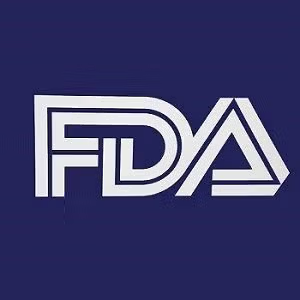News
Article
FDA Accepts NDA for Vatiquinone as Potential Treatment for Friedreich Ataxia
Author(s):
Key Takeaways
- Vatiquinone, a selective 15-LO inhibitor, is under FDA review for treating Friedreich ataxia, with a PDUFA date of August 19, 2025.
- The MOVE-FA study showed vatiquinone's significant impact on the mFARS upright stability subscale, despite not meeting the primary endpoint.
The FDA has assigned a PDUFA action date of August 19, 2025, and if approved, vatiquinone would be the first therapy for pediatric patients with Friedreich ataxia.
Matthew B. Klein, MD

According to a new announcement, the FDA has accepted PTC Therapeutics’ new drug application (NDA) for its investigational agent vatiquinone as a treatment for patients with Friedreich ataxia (FA), a rare, inherited neurodegenerative disorder that primarily affects the nervous system and heart. The agency has assigned a prescription drug user fee act (PDUFA) target date of August 19, 2025, for the first-in-class selective inhibitor of 15-Lipoxygenase (15-LO).1
The NDA for the small molecule therapy was based on findings from the pivotal MOVE-FA study (NCT04577352) as well as 2 long-term trials that featured pediatric and adult patients with FA. MOVE-FA, a registration-directed trial, did not meet its primary end point of change in overall modified Friedreich Ataxia Rating Scale (mFARS; P = .14); however, there was a statistically significant effect (P = .021) observed on the mFARS upright stability subscale, a pre-specified end point. In the study’s open-label extension, treatment with vatiquinone resulted in a 3.7-point benefit (P <.0001; n = 70) in mFARS at 144 weeks relative to a matched natural history cohort from the Friedreich Ataxia Clinical Outcome Measures disease registry.
"We are excited to be one step closer to bringing an approved therapy to all patients with Friedreich's ataxia," Matthew B. Klein, MD, chief executive officer at PTC, said in a statement.1 "If approved, vatiquinone would be the first therapy for pediatric patients with FA, and provide a potential safe, well-tolerated and effective treatment alternative for adults. The granting of priority review by FDA reflects the significant unmet need for younger patients with FA. We look forward to working collaboratively with FDA during the review process."
To date, omaveloxolone (Skyclarys; Biogen) remains the only FDA-approved treatment specifically for FA in patients aged 16 and older. Omaveloxolone and vatiquinone differ in that the former is an antioxidant and activator of Nrf2 while the latter is a first-in-class selective inhibitor of 15-LO, an enzyme that is a key regulator of the energetic and oxidative stress pathways that are disrupted in FA. Other off-label treatments such as idebenone, coenzyme Q10 and vitamin E have been used to address symptoms or potential disease mechanisms.
READ MORE: FDA Accepts NDA Application for Troriluzole as Potential First Treatment for Spinocerebellar Ataxia
MOVE-FA featured 146 pediatric, adolescent, and adult patients with FA, with results showing a clinically meaningful and statistically significant effect of vatiquinone on the Upright Stability Subscale (USS), a predictive end point for risk of loss of ambulation. After 72 weeks of treatment, vatiquinone showed significant benefits in the modified intent-to-treat population, with a reduction in USS score (–1.26; P = .021). Additionally, treatment delayed the loss of functional measures, including items E2B and E3A, and predicted a 42% reduction in annual disease progression on USS.2
An additional analysis of MOVE-FA presented at the 2024 Muscular Dystrophy Association (MDA) Clinical & Scientific conference showed that vatiquinone had a clinically meaningful and statistically significant effect on USS progression. Of the 4 subscales of mFARS, USS was the only which displayed progression from baseline to week 72 in the placebo population. This finding was consistent with natural history data that shows that disease progression in ambulatory pediatric and adolescent patients is primarily driven by declines in the functions assessed in the USS.3
Both long-term open-label extension studies used in the NDA met their primary endpoints, demonstrating statistically significant impacts on disease progression. In the MOVE-FA extension, vatiquinone showed a clinically meaningful 50% slowing of disease progression over 3 years, with a 3.7-point difference compared to the natural history cohort. The therapy was safe and well-tolerated, with no treatment-related serious adverse events reported. Additionally, a prior phase 2 trial (NCT01962363), not included in the NDA, showed a statistically significant impact on disease severity in FA, with a small-scale study of 4 individuals demonstrating a 9% improvement in total FARS scores after 6 months of treatment. Notably, the bulbar and upper limb coordination subscales showed the greatest improvements, at 80% and 53%, respectively, with these mean improvements persisting at 18 months, though somewhat attenuated.





